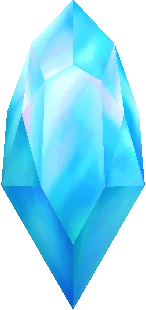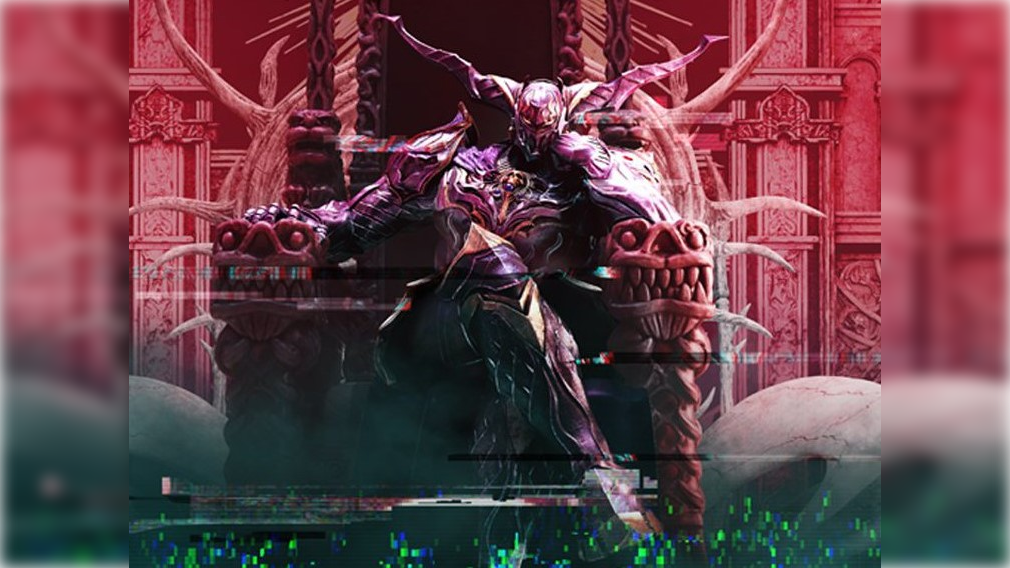
Apologize for the interruption into your regularly scheduled competitive season content. to bring you the next article in the Let’s Talk CP series. Let’s Talk CP series where take a deep dive in the CP system of FFTCG. If you haven’t already, take a look at our previous entries into the series where we discuss The Basics and Realized Cost. These articles serve as valuable refreshers for our current topic and provide a solid foundation for comprehending how we evaluate cards and enhance the efficiency of CP calculation for players entering the competitive scene.
In the realm of FFTCG, every game presents us with numerous decisions that can shape its outcome. Should we break that forward? Is it the right time to sweep the board? Do we take the risk of swinging for damage and potentially triggering an EX-burst? Each choice carries immense weight, adding to the thrill and frustration that make TCGs so captivating. A decision made early in the game can come back to haunt us many turns later, as we desperately seek a solution to an exasperating board state. It’s a mixture of exhilaration and exasperation, and it’s precisely what draws me to the world of TCGs.
Likewise, when constructing a deck, we face equally challenging decisions that require careful navigation. Deck building entails considering a multitude of factors and hypothetical scenarios. However, the key distinction lies in the abstract and vague nature of these decisions. How will our deck fare against an opponent who floods the board with three forwards on turn 1? What if they opt for a slower, late-game victory strategy with minimal forward plays? With only 50 cards at our disposal, our deck must provide answers to all these situations, and we must find those answers promptly and efficiently. Today’s article will delve into the art of acquiring the necessary cards precisely when we need them and explore different strategies to maximize our chances of success. So, let’s dive into the world of CP management and strategic deck optimization.
Drawing Cards
First up, let’s explore one of the most fundamental options available to us: drawing cards. It’s a universally beloved action that brings excitement and a rush of adrenaline. Each draw from the top of the deck holds the promise of finding the answer we need. In games like Digimon TCG, drawing cards is integrated into the core game loop to ensure a constant flow of new options upon Digivolution. However, given that our deck is mostly randomized, how do we ensure our draws are advantageous? Why is it worthwhile to trade a dead card for a random chance at a new one? To answer these questions, let’s delve deep into the benefits of drawing cards and how we can maximize their impact to our advantage.
- A non Light/Dark card is worth 2CP. Period.

In FFTCG, discarding a non-Light/Dark card universally generates 2CP. This fact remains constant and unchanging, unless a card is printed that explicitly states otherwise. At the time of publication, no such card exists. Therefore, all our calculations and arguments will be based on this fundamental truth. For more information on this topic, we recommend referring to our article on The Basics, where we delve deeper into the economy in general.
Drawing cards certainly has its advantages, but it equally has its downsides. When you top deck the card you want, you feel like an unstoppable deity who should be enshrined in the Pantheon. When you top deck poorly, you wonder why you even bothered to pick up your cards that day. It is the definition of high risk/high reward and a necessary evil. Each time you draw a card, you increase your current in-game options. Additionally, since each card is worth 2CP, you add 2CP to your overall resource pool. Drawing even 1 extra card per turn can have long lasting effects on the game as whole. Let’s take a look at the 2 graphs below. Once represents a player just drawing 2 per turn while the other represents a player who draws 3 cards per turn.

The provided graphs offer a fascinating insight into the lasting impact of drawing extra cards per game. A quick glance at the X-axis reveals a staggering revelation: drawing an additional card per turn reduces the game’s duration by an impressive 7 turns or 43%. This astonishing finding implies that with each extra card drawn, players are trading a longer, more drawn-out game for a more efficient path to victory. On the flip side, it also means that we outpace our opponent in terms of speed, as we accumulate more CP throughout the game’s lifespan. The number of cards remaining in our deck becomes inconsequential as long as we avoid deck-out scenarios, and in fact, gaining visibility into more cards than our opponent becomes a distinct advantage. Not only does it provide us with additional lines of play, but it also increases our chances of finding favorable solutions to the challenges we encounter—a strategy we aptly refer to as “Out Valuing” our opponent. While different elements and element combinations may employ diverse methods of card draw, the underlying principle of maximizing value remains consistent: possess more CP than your opponent. To illustrate this concept further, let’s explore a selection of popular meta cards that exemplify the ability to generate value through drawing cards. Each card gives us good insight into how the developers intend for each element to generate value.



Searching Cards

Our next option for finding answers and increasing our CP pool is through card search. Searching for specific cards is not a new concept if you’ve played other trading card games. By paying an upfront cost of X, we can search for the exact card we need. Think of it as a curated draw, where we eliminate the randomness and obtain the precise card required in the moment. In FFTCG, the ability to search for specific cards is crucial for players to quickly and efficiently assemble their desired card combinations. This differs from games like Magic, where card search exists but is not nearly as prevalent as in FFTCG. Personally, I appreciate this design choice as it reduces the occurrence of “dead games” – situations where you start a game but never even see the primary win conditions of your deck. Such scenarios are frustrating and undesirable, especially during Swiss or Single Elimination Tournaments. The searching mechanic mitigates this issue by allowing players to build decks that are as consistent as possible, increasing the likelihood of seeing their desired cards more frequently. Admittedly, dead games may still occur occasionally, but they become significantly less likely over a large sample size of games.
The math behind searching is very straightforward and completely equal to drawing a card. Remember, a card is only ever worth 2CP so anything that fetches you a card is generating…..2CP. So why is searching considered stronger than drawing? Part of this answer is obvious, and we already touched on it a bit; the other might surprise you.
Firstly, searching is not random. Whenever you search, you have a 100% success rate in finding the card you desire, assuming it exists in your deck. Consistency in card games is paramount because we deal with a random deck of 50 cards. Therefore, any mechanic, technique, or strategy that allows us to maintain a consistent deck holds greater value for players. In a similar vein, players can now plan for specific solutions to challenging matchups by including only one copy of a particular card. They can incorporate a searching effect that not only finds a crucial piece of their deck but also locates a potential “out” card that can save them in unfavorable matchups or board states. Let’s take a quick look at how this combination would function in a deck…



Reeve into Cait Sith has established itself as the primary color fixing combo in Ice/Lightning since the release of Cait Sith in Opus 11. As a color fixing combo, our goal is to maximize our chances of quickly obtaining the combo and necessary cards. This allows us to efficiently fix our CP and establish a strong economy to deploy our threats throughout the game. Cait Sith’s added ability to steal our opponent’s best card and force them to draw a card adds another layer of strategic advantage. However, the combo does have a notable weakness that can create complications during gameplay. What if we draw Cait Sith first? What if we already have a Cait Sith in play? What if our opponent rapidly plays out their hand to reach 3 backups, such as in Mono Wind/Ramp Strategies? In such scenarios, Cait Sith loses its value, and the entire combo becomes less relevant. To address this issue, we can introduce a single copy of Vincent into the deck, providing an alternate search target and more flexibility in handling our opponent’s game state. Moreover, we still maintain three targets for Reeve, ensuring that even if we encounter a few EX Bursts, we can still benefit from the additional 2CP gained through a search. Simple adjustments like this can significantly enhance the power and consistency of any deck by making a single card change.
In addition to its direct benefits, searching also offers a less obvious advantage known as deck filtering. This strategic technique involves removing unwanted cards from the deck, thereby increasing the likelihood of drawing desired cards later in the game. It ties closely with the use of tech cards, as discussed in the previous section. For example, if we happen to draw both Cait Sith and Reeve at the beginning of a game, we can utilize Reeve’s search ability to obtain the second Cait Sith solely for CP purposes, effectively eliminating it from the deck. This ensures that we won’t face the inconvenience of drawing an unusable card during critical moments in the later stages of the game. By employing this approach, we optimize our card draws and improve our CP economy, making it a crucial tool for competitive play. Let’s examine the following graph to gain further insight into its impact…


The above graph takes a couple of assumptions into account.
- We are assuming we are only searching 1 card per turn
- There is only 1 copy of the card you want to draw
- Drawing 2 cards per turn only
- No mulligans. (More on this is a different article later)
Filtering is an incredibly powerful technique that can significantly boost the consistency of a strong deck, as the data clearly illustrates. In the early stages of a game, the chances of drawing a specific card are generally similar, but as the game progresses, the benefits of filtering become increasingly evident. By turn 8 or 9, the percentage of drawing the desired card begins to accumulate in favor of the player, and by turn 15, filtering can dramatically increase the likelihood of finding the necessary cards.
Although this is theoretical as it represents a statistical extreme at turns 10+, there are times where filtering materializes real impact on the game and overall meta. Let’s take a look at the Top 4 rankings for the Tabletop Tavern Materia Cup San Diego tournament that recently occurred. Notice what all 4 decks have in common? If you guessed Syldra (12-097H), you would be correct. Syldra (12-097H) is currently the best search and filtering card in the game, and it isn’t really close. The next closest card is Opus 19 backup Rydia (19-068R). Both cards enable you to search the card(s) you want and/or filter the card(s) you wish to filter. Need to cast Leviathan, Lord of the Whorl (14-102L) early, Cast Syldra (12-097H) grabbing Leviathan and a spare water card you don’t need. Have to color fix and get the backup you need, cast Rydia (19-068R) grabbing the backup you need, and the off color summon necessary to play the card in hand. The filtering and consistency these cards enable are off the charts and propel them to the highest levels of the competitive play. Syldra (12-097H), in particular, is so strong that the community has discussed a potential ban in the past. SE/HJ acknowledged Syldra on the watch list in the last balance/ban Announcement from the Producer – New Banned Cards (Effective August 12, 2022) | FF Trading Card Game (square-enix-games.com).
Final Thoughts
Drawing and searching are just a couple of the ways we can use to find the cards in our deck we need. Their obvious strengths in expanding your CP pool and play lines are enhanced by their less obvious strengths of filtering and finding your tech cards. Abusing these powerful techniques can lead to great success in your next tournament as we have seen in San Diego and many other topics results of the 2023 competitive season. So, next time you are building your new hotness, remember that your overall deck power isn’t judged by the most powerful cards in the deck but the consistency at which it can deploy them game in and game out.
However, these are but two ways we can find the cards we need, and we will go over other topics in the next article. So, stay tuned for the next article in Let’s Talk CP.
Until then, I return to my den of hibernation.
** Editor Update: Graphs were updated to be easier to understand after feedback






Leave a Reply